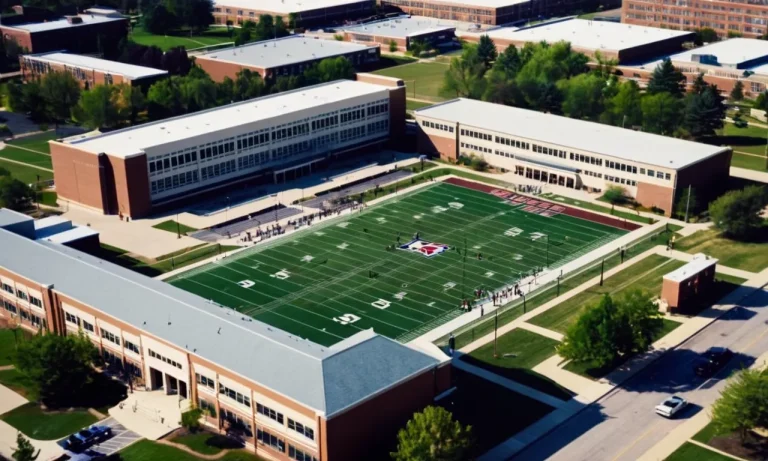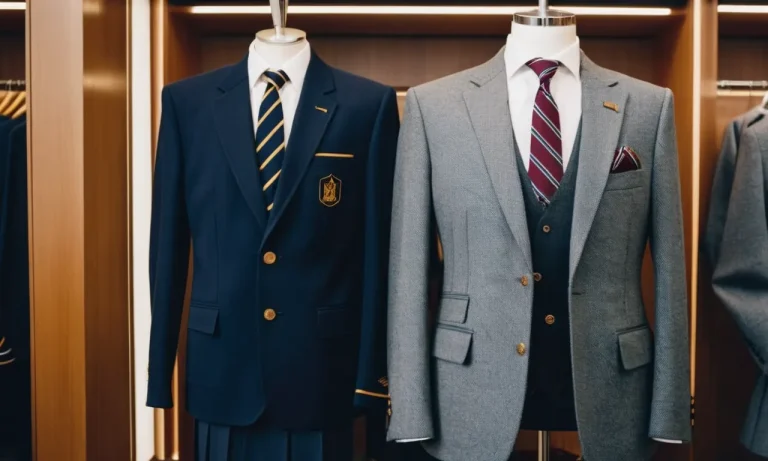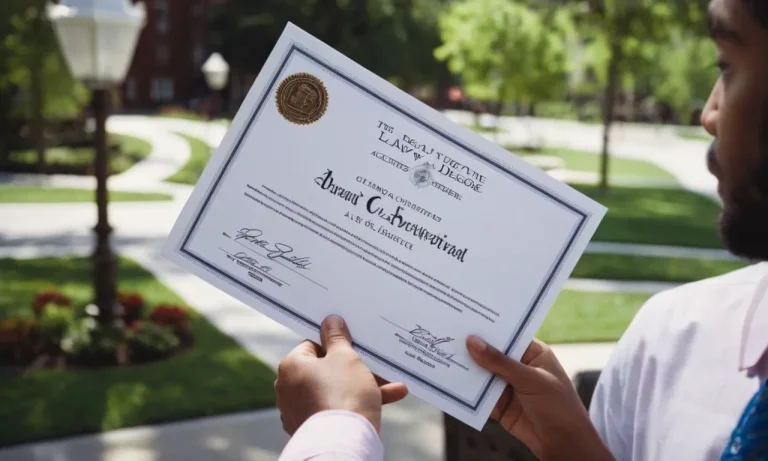Soaring through the skies, piloting an aircraft has long been a dream for many. However, the path to becoming a licensed pilot can be shrouded in uncertainty, especially when it comes to understanding the educational requirements.
One question that often arises is whether flight school is considered a trade school or not.
If you’re short on time, here’s a quick answer to your question: Flight schools are generally not considered trade schools, as they provide specialized training for a specific career path – becoming a pilot. However, there are some similarities and overlaps between flight schools and trade schools.
In this comprehensive article, we’ll delve into the intricacies of flight schools, exploring their similarities and differences with trade schools. We’ll also discuss the various types of flight training programs, the certifications and licenses required, and the career prospects that await aspiring pilots.
Whether you’re considering a career in aviation or simply curious about the educational landscape, this guide will provide you with valuable insights.
Understanding Trade Schools
Definition and Purpose of Trade Schools
Trade schools, also known as vocational or technical schools, are educational institutions designed to equip students with practical, hands-on skills for specific trades or occupations. The primary purpose of these schools is to prepare individuals for careers in various industries, such as construction, healthcare, automotive, culinary arts, and many others.
Unlike traditional four-year colleges or universities, trade schools focus on providing job-specific training, often in a shorter time frame, making them an attractive option for those seeking to enter the workforce quickly.
Types of Programs Offered at Trade Schools
Trade schools offer a wide range of programs to cater to diverse career interests. Some popular programs include:
- Automotive Technology: Trains students in repairing, maintaining, and servicing vehicles.
- Cosmetology: Covers hair styling, skincare, makeup application, and salon management.
- HVAC (Heating, Ventilation, and Air Conditioning): Teaches installation, repair, and maintenance of heating and cooling systems.
- Welding: Covers various welding techniques, such as MIG, TIG, and stick welding.
- Nursing and Medical Assisting: Prepares students for careers in healthcare settings.
These programs often lead to certificates, diplomas, or associate degrees, depending on the duration and depth of the curriculum.
Hands-on Training and Skill Development
One of the hallmarks of trade schools is their emphasis on hands-on training and skill development. Unlike traditional academic programs, trade schools prioritize practical experience through simulated work environments, workshops, and internships.
This approach allows students to gain real-world experience and develop the necessary skills to excel in their chosen trades. According to a study by the National Center for Education Statistics, over 60% of trade school graduates reported feeling well-prepared for their careers after completing their programs.
Trade schools often maintain strong partnerships with industry professionals and employers, ensuring that their curricula remain up-to-date and aligned with current industry standards. This collaboration helps students stay ahead of the curve and acquire the latest techniques and technologies used in their respective fields.
Furthermore, many trade schools offer job placement assistance, helping graduates transition smoothly into the workforce upon completion of their programs.
The Nature of Flight Schools
Flight schools, often referred to as aviation academies or pilot training centers, are specialized educational institutions dedicated to equipping aspiring pilots with the necessary skills and knowledge to soar through the skies.
These institutions offer a unique blend of theoretical instruction and hands-on practical training, ensuring that students are well-prepared for the challenges and responsibilities that come with being a professional pilot.
Specialized Training for Pilots
Flight schools are designed to provide comprehensive training tailored specifically for aspiring pilots. The curriculum covers a wide range of subjects, including aerodynamics, navigation, meteorology, aviation regulations, and aircraft systems.
Students are immersed in an environment that fosters a deep understanding of the intricacies of flight operations, enabling them to develop the critical thinking and decision-making skills essential for safe and efficient piloting.
Theoretical and Practical Components
The training programs at flight schools incorporate both theoretical and practical components. The theoretical aspect delves into the fundamental principles of aviation, covering topics such as flight planning, air traffic control procedures, and emergency protocols. Students engage in classroom sessions, interactive simulations, and self-study modules to gain a solid grasp of the theoretical foundations.
On the other hand, the practical component involves hands-on flight training, where students have the opportunity to apply their knowledge in real-world scenarios under the guidance of experienced instructors.
This hands-on experience is crucial, as it allows students to hone their flying skills, develop situational awareness, and build confidence in the cockpit.
Certifications and Licenses Required
Upon successful completion of the training program, students at flight schools are eligible to obtain various certifications and licenses required for different types of aviation careers. These include:
- Private Pilot License (PPL): This license allows individuals to fly aircraft for personal or recreational purposes.
- Commercial Pilot License (CPL): With this license, pilots can be employed for commercial operations, such as charter flights, aerial photography, or air tours.
- Airline Transport Pilot License (ATPL): This is the highest level of pilot certification, required for those seeking careers as commercial airline pilots.
According to the Federal Aviation Administration (FAA), in 2021, there were over 600,000 active pilots in the United States, with a growing demand for skilled aviators in various sectors, including commercial airlines, private aviation, and military operations.
Flight schools play a crucial role in shaping the future of aviation by providing comprehensive training and equipping students with the knowledge and skills necessary to navigate the skies safely and efficiently.
With a combination of theoretical instruction and practical experience, these institutions ensure that aspiring pilots are well-prepared to embark on rewarding and exciting careers in the aviation industry. 😎✈️
Similarities and Differences Between Flight Schools and Trade Schools
When it comes to pursuing a career in aviation or any skilled trade, the decision between attending a flight school or a trade school can be a crucial one. While both institutions offer hands-on training and career-focused education, there are distinct similarities and differences that set them apart.
Hands-on Training Approach
Both flight schools and trade schools share a common emphasis on practical, hands-on training. In the aviation industry, flight schools provide students with extensive flight time and simulator training to develop the necessary skills for piloting aircraft.
Similarly, trade schools offer hands-on instruction in various skilled trades, such as automotive technology, HVAC, welding, and construction, where students gain real-world experience through workshops and on-site training facilities.
Career-Focused Education
One of the key similarities between flight schools and trade schools is their career-focused approach to education. Both types of institutions are designed to prepare students for specific careers and provide them with the knowledge and skills required to succeed in their chosen fields.
Flight schools equip aspiring pilots with the necessary certifications and ratings to pursue careers as commercial pilots, flight instructors, or in other aviation-related roles. Trade schools, on the other hand, offer programs tailored to various skilled trades, enabling graduates to enter the workforce as certified professionals in their respective industries.
Differences in Program Duration and Scope
While flight schools and trade schools share some similarities, there are notable differences in the duration and scope of their programs. Flight training programs, such as those for commercial pilot licenses, can take anywhere from several months to a few years to complete, depending on the type of license or rating being pursued.
According to the Bureau of Labor Statistics, the average flight time needed to become a commercial pilot is around 250 hours.
In contrast, trade school programs can vary significantly in length, ranging from a few months for certificate programs to two years for associate’s degrees. The scope of trade school programs is also broader, covering a wide range of skilled trades, including
- construction
- manufacturing
- automotive
- healthcare
- culinary arts
Additionally, flight schools often have more stringent entry requirements, such as medical certifications and specific academic prerequisites, due to the rigorous nature of aviation training. Trade schools, on the other hand, may have more flexible admission criteria, allowing individuals with diverse educational backgrounds to enroll in their programs.
| Aspect | Flight Schools | Trade Schools |
|---|---|---|
| Program Duration | Several months to a few years | A few months to two years |
| Scope | Focused on aviation careers | Diverse range of skilled trades |
| Entry Requirements | Stringent (medical certifications, academic prerequisites) | More flexible |
Career Prospects and Opportunities for Pilots
Becoming a pilot opens up a world of exciting and diverse career opportunities, ranging from commercial aviation to private and corporate flying, military aviation, and even flight instruction. With the ever-growing demand for air travel, the job prospects for skilled pilots remain promising and rewarding.
Commercial Aviation
Commercial aviation is arguably the most coveted and lucrative career path for pilots. Major airlines and regional carriers around the world are constantly seeking qualified pilots to fly their fleets.
According to the Boeing Pilot & Technician Outlook, the industry will need over 600,000 new pilots by 2041 to meet the growing demand for air travel. 🚀 With competitive salaries, excellent benefits, and the opportunity to travel the world, a career as a commercial airline pilot is a dream for many aviation enthusiasts.
Private and Corporate Aviation
Private and corporate aviation offers a unique and rewarding career path for pilots. From flying high-net-worth individuals and executives on private jets to transporting cargo and special operations, this sector provides a diverse range of opportunities.
Companies like NetJets and Flexjet are among the leaders in the private aviation industry, offering competitive compensation and benefits to their pilots. 💰 The ability to fly state-of-the-art aircraft and cater to the needs of elite clientele makes this a highly sought-after career choice for many aspiring pilots.
Military Aviation
For those with a passion for serving their country and pushing the boundaries of aviation, a career in military aviation can be incredibly rewarding. Pilots in the armed forces fly a wide range of aircraft, from fighter jets and transport planes to helicopters and drones, often in challenging and high-stakes situations.
The U.S. Air Force, U.S. Navy, and other military branches offer extensive training, competitive benefits, and the opportunity to travel the world while serving your nation. 🇺🇸 With a strong emphasis on discipline, teamwork, and leadership, a military aviation career can be both thrilling and deeply fulfilling.
Flight Instruction
For those with a passion for teaching and sharing their love of aviation, a career as a flight instructor can be incredibly rewarding. Flight instructors play a crucial role in training and mentoring the next generation of pilots, imparting their knowledge and expertise to aspiring aviators.
Whether working at a flight school, a university aviation program, or as an independent contractor, flight instructors have the opportunity to shape the future of aviation while enjoying a flexible schedule and the satisfaction of helping others achieve their dreams.
👨🏫 With the constant demand for new pilots, flight instruction offers a stable and fulfilling career path for those who excel in teaching and mentoring.
Conclusion
While flight schools and trade schools share some similarities in their hands-on training approach and career-focused education, there are distinct differences that set them apart. Flight schools provide specialized training tailored specifically for aspiring pilots, equipping them with the necessary theoretical knowledge and practical skills to obtain the required certifications and licenses.
As the aviation industry continues to grow and evolve, the demand for skilled pilots remains high. Whether you aspire to soar through the skies as a commercial airline pilot, navigate private or corporate jets, serve in the military, or share your passion for flying as a flight instructor, completing a comprehensive flight training program is the first step towards realizing your dreams.
Ultimately, the decision to pursue a career as a pilot through a flight school is a personal one, influenced by your interests, goals, and aspirations. By understanding the nature of flight schools and their role in the aviation industry, you can make an informed choice and embark on a journey that will take you to new heights, both literally and figuratively.






